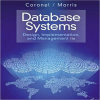Solution Manual for Physical Chemistry Quantum Chemistry and Molecular Interactions 1st Edition Andrew Cooksy 0321814169 9780321814166
$35.00 Original price was: $35.00.$26.50Current price is: $26.50.
Click icon below to Dolwnload sample Solution Manual for Physical Chemistry Quantum Chemistry and Molecular Interactions 1st Edition Andrew Cooksy 0321814169 9780321814166
This is completed downloadable of Physical Chemistry Quantum Chemistry and Molecular Interactions 1st Edition Andrew Cooksy Solution Manual.

Instant download Physical Chemistry Quantum Chemistry and Molecular Interactions 1st Edition Andrew Cooksy Solution Manual pdf docx epub after payment.
Product Details:
Key Benefit: Andrew Cooksy’s clear teaching voice help students connect immediately with the subject matter while defusing some of their initial trepidation about physical chemistry. Through lively narrative and meticulous explanations of mathematical derivations, Physical Chemistry: Thermodynamics, Statistical Mechanics, and Kinetics engages students while fostering a sincere appreciation for the interrelationship between the theoretical and mathematical reasoning that underlies the study of physical chemistry. The author’s engaging presentation style and careful explanations make even the most sophisticated concepts and mathematical details clear and comprehensible.
Language: : English
ISBN-10: 0321814169
ISBN-13: 978-0321814166
ISBN-13: 9780321814166
Author: Andrew Cooksy
physical chemistry quantum chemistry and spectroscopy
physical chemistry quantum chemistry and molecular interactions pdf
physical chemistry quantum chemistry and molecular interactions
physical chemistry quantum mechanics lecture notes
Table of Content:
A Introduction: Tools from Math and Physics
A.1 Mathematics
A.2 Classical physic
I Atomic Structure
1 Classical and Quantum Mechanics
1.1 Introduction to the Text
1.2 The Classical World
1.3 The Quantum World
1.4 One-Electron Atoms
1.5 Merging the Classical and Quantum Worlds
2 The Schrödinger Equation
2.1 Mathematical Tools of Quantum Mechanics
2.2 Fundamental Examples
3 One-Electron Atoms
3.1 Solving the One-Electron Atom Schrödinger Equation
3.2 The One-Electron Atom Orbital Wavefunctions
3.3 Electric Dipole Interactions
3.4 Magnetic Dipole Interactions
4 Many-Electron Atoms
4.1 Many-Electron Spatial Wavefunctions
4.2 Approximate Solution to the Schrodinger Equation
4.3 Spin Wavefunctions and Symmetrization
4.4 Vector Model of the Many-Electron Atom
4.5 Periodicity of the Elements
4.6 Atomic Structure: The Key to Chemistry
II Molecular Structure
5 Chemical Bonds
5.1 The Molecular Hamiltonian
5.2 The Molecular Wavefunction
5.3 Covalent Bonds in Polyatomic Molecules
5.4 Non-Covalent Bonds
5.5 Nuclear Magnetic Resonance Spectroscopy
6 Molecular Symmetry
6.1 Group Theory
6.2 Symmetry Representations for Wavefunctions
6.3 Selection Rules
6.4 Selected Applications
7 Electronic States of Molecules
7.1 Molecular Orbital Configurations
7.2 Electronic States
7.3 Computational Methods for Molecules
7.4 Energetic Processes
8 Vibrational States of Molecules
8.1 The Vibrational Schrödinger Equation
8.2 Vibrational Energy Levels in Diatomics
8.3 Vibrations in Polyatomics
8.4 Spectroscopy of Vibrational States
9 Rotational States of Molecules
9.1 Rotations in Diatomics
9.2 Rotations in Polyatomics
9.3 Spectroscopy of Rotational States
III Molecular Interactions
10 Intermolecular Forces
10.1 Intermolecular Potential Energy
10.2 Molecular Collisions
11 Nanoscale Chemical Structure
11.1 The Nano Scale
11.2 Clusters
11.3 Macromolecules
12 The Structure of Liquids
12.1 The Qualitative Nature of Liquids
12.2 Weakly Bonded Pure Liquids
12.3 Solvation
13 The Structure of Solids
13.1 Amorphous Solids, Polymers, and Crystals
13.2 Symmetry in Crystals
13.3 Bonding Mechanisms and Properties of Crystals
13.4 Wavefunctions and Energies of Solids
People Also Search:
physical chemistry quantum mechanics pdf
physical chemistry quantum mechanics study guide
physical chemistry vs quantum chemistry
physical chemistry quantum mechanical model





